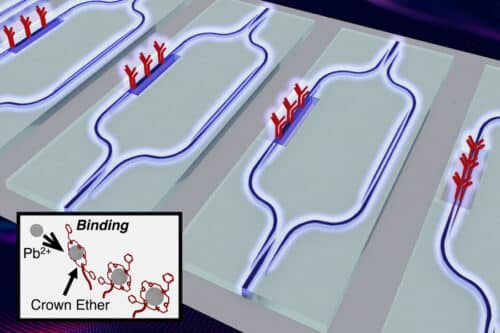The chip-scale device offers precise detection of lead levels in drinking water, a critical issue affecting 240 million people globally.

Credits:Image: Jia Xu Brian Sia
Engineers from MIT, Nanyang Technological University, and multiple corporations have created a new, cost-effective device to detect and measure lead in water. This innovation could mark a major step forward in addressing a widespread global health concern.
Testing for lead in water often involves complex, costly equipment and can take days to yield results. Alternatively, simpler test strips provide only a basic yes-or-no indication of lead presence, without specifying the concentration. Current U.S. Environmental Protection Agency standards mandate that drinking water should have no more than 15 parts per billion of lead, a level that is challenging to detect accurately.
The newly developed system, which might hit the market in two to three years, promises to identify lead concentrations as minute as 1 part per billion with great precision. This breakthrough technology incorporates a chip-based sensor within a portable device, delivering almost immediate quantitative data from just a small droplet of water.
The team embarked on developing a straightforward detection method utilizing photonic chips, which measure using light. The main challenge involved affixing ring-shaped molecules called crown ethers to the photonic chip surface. These molecules are adept at capturing specific ions like lead. After considerable research, they succeeded in attaching these molecules through a chemical technique known as Fischer esterification. “This is one of the key breakthroughs we have achieved with this technology,” Sia comments.
During evaluations, the new chip demonstrated its capability to detect lead concentrations as low as one part per billion in water. Even at much higher concentrations, useful for assessing environmental pollutants like mine tailings, the chip maintained an accuracy within 4 percent. The device could utilize interchangeable cartridges, each tailored with distinct crown ethers that are designed to bind to specific ions, allowing for the detection of different elements.






